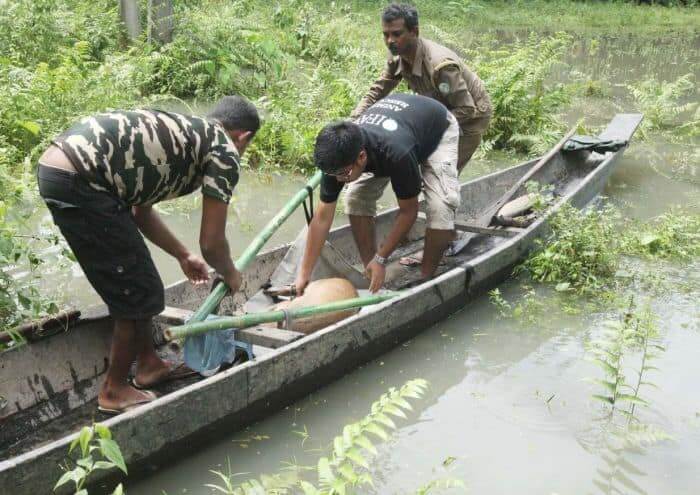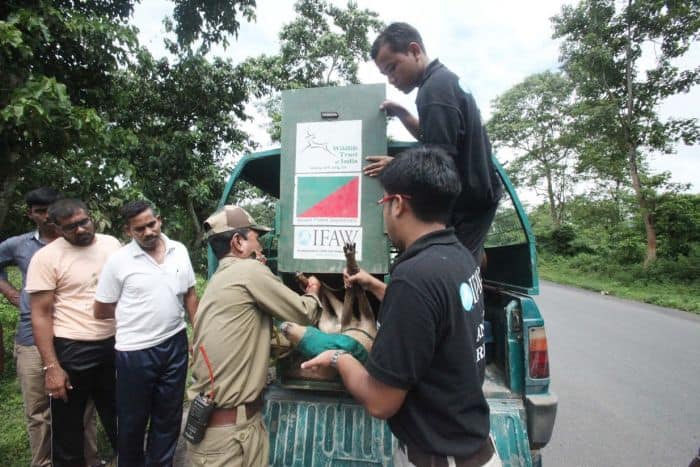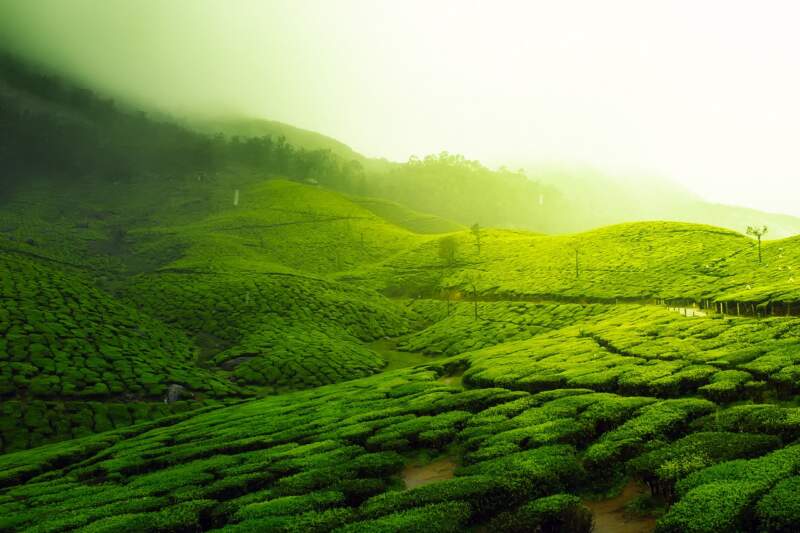Diphu September 11: Two units of Mobile Veterinary Service (MVS) run by Centre for Wildlife Rehabilitation and Conservation (CWRC) — an IFAW-WTI wildlife care facility rescued and protected flood affected Kaziranga animals in 11 cases displaced by the swelling water of the swamped Brahmaputra.
The necessary evil of nature the wild animals of this swampy national park have to endure every year; which the experts describe as “flood crisis of Kaziranga National Park.”
Assam Forest Department officials pressed into service hundreds of its officials and experienced personnel to assist the NGO workers manning the mobile veterinary unit. The MVS units went on high alert ever since the Brahmaputra began flowing above the danger mark since last week. “These rescue cases happened between September 1 to 6,” the WTI source said.
Out of the 11 rescued animals, the MVS team released two hog deer and a wild boar into the Kaziranga National Park. Meanwhile, five hog deer died during the floods and most of them succumbed to road hits on NH-37 which is better known as killer highway. A female Eastern swamp deer with severe vehicle hit injuries was admitted but died after three days of clinical observation at the CWRC.
As is usual during the floods, wild animals try to cross the highway to reach the Karbi Anglong hills for safety. Each year scores of animals die due to road hits on NH 37 that cuts through Kaziranga National Park. In order to reduce animal mortality, the Kaziranga Forest Authority introduced ‘Time Cards’ to regulate the speed of vehicles on NH37 but the method failed to reduce the animal mortality rate.
As in previous years, this year Assam Forest Department personnel, Forest Protection Force, police, NGOs and locals came together to protect wildlife from the raging floods. During this phase, two MVS units of CWRC covered the most vulnerable zones of the Kaziranga National Park with twenty-four hours patrolling in the slayer highway, which runs through four forest ranges serving commercial interests. Authorities have done precious little either to divert this freeway or canalizing traffic securing the long-established animal corridor for the animals including big game like rhinoceros, elephant and tiger.
Though the water level is receding, the mobile veterinary unit team is in constant touch with the Kaziranga authorities to ensure that no stray incident goes unattended. Three veterinarians, animal keepers, a biologist and sociologist from CWRC are attending to all flood related incidents in the park.
The pre-flood awareness campaign of IFAW-WTI in the fringe villages of Kaziranga-Karbi Anglong landscape has made the villagers conscious about the safety of wild animals. The development is encouraging, and the reluctant authority is in fact yielding opposite results among the residents of the locality who are actually interested in protecting the animals.
The recent floods have submerged more than 80% of the park area for more than 72 hours. This time around, the rise in water levels was slower, allowing animals to move to the foothills of Karbi Anglong or high ground in the Kaziranga National Park, and as the water levels are slowly receding, the animals are now retreating to the national park.
With the receding water of the Brahmaputra there is a booty of fresh food for the preying and herbivorous animals in the large swamps and specific large water areas. They fill with natural fish and new drifted aquatic life from the mighty Brahmaputra whose superfluous water creates this wonder every year.
The floods are both a curse and boon for the inhabitants of Kaziranga National Park.

Rescued animal in the canoe

CWRC rescuers bring in the wild hog deer

IFAW rescuers bring in the animal from the vehicle




